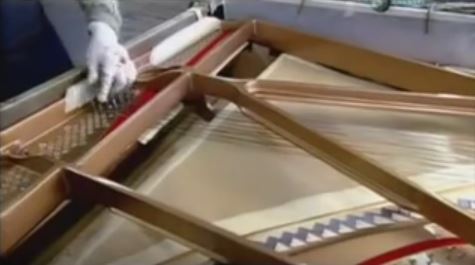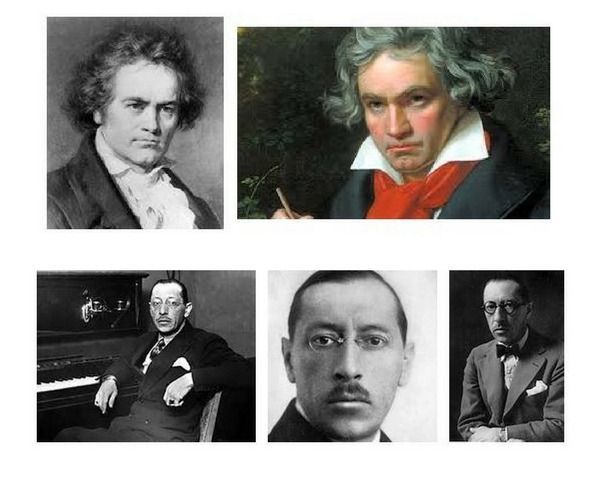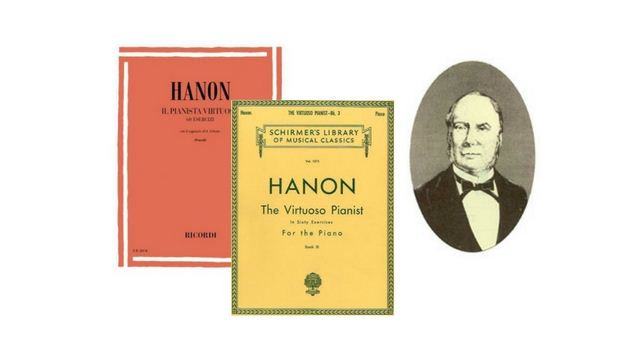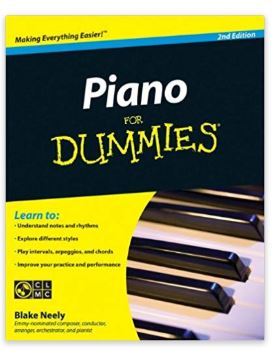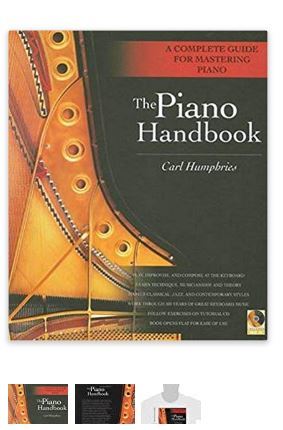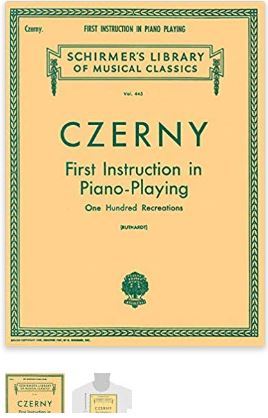- Home
- Author's Archive:
How a grand piano is made?
A grand piano can cost as much money as a luxury car. Prices usually exceed €20,000 easily and of course these figures have their reasons. We’re talking about real technical wonders.
In order to understand the price of a grand piano, it is necessary to understand its manufacturing process and the complexity of the elements involved.
Over time, technical improvements have been made to the manufacturing process, but we could say that in general the main ideas are the same. Some things have changed, such as the material used to make the keys.
Previously ivory was used, but for obvious reasons of animal conservation this material was replaced by high quality synthetic plastic that simulates the same touch. Today both elephants and rhinos are in extreme danger of extinction. You can only find pianos with ivory keys in the second hand market and they will be from before the ban.
The creation of the basic structure
I’m sure you’ll be interested in…
The first thing that is done when making the grand piano is the basic structure, for it maple wood is used and what will be the main wooden planks are molded. Which will be the thickness of the piano.

These plates are glued and then taken to a press. With special pressure moulds these sheets will be moulded to take on the shape and contour of the piano. Then they will remain glued under pressure for a certain time so that they form a viable structure.

After a long time of pressing the plates, they can be taken to a special room where the glue from the main frame will continue to dry and condition itself. He’ll spend about 30 days in this room. Afterwards, cross woods will be added to strengthen the structure and give it more consistency.

Resonator and Harmonic table
After creating the main wood structure you can start to put the elements that will create the sound, one of them is the tension resonator, which will go between the wood and the harmonic board.
And what’s the harmonic board? It is a metal plate that will serve as an amplifier of the sound produced by the strings that are activated when the piano keys are pressed. The vibration will reach this piece of metal through the bridges and the sound wave will be amplified by it.

Harmonic Table
Bridges and strings
Above the harmonic board will be the bridges, wooden supports that will serve to transfer the vibration of the piano strings to the harmonic board. They are located above the harmonic board and are two bridges.

Underneath the harmonic board a few wooden rods are placed so that it can resonate freely and after placing the two bridges over it the same ones are covered and the harmonic board with a cast iron plate. Which has to be placed in a special way for everything to work properly.

Then in the bridges the notches are made where the inserted strings will go, three strings in each notch, it is a high precision operation because the strings have to be able to vibrate freely.

External structure of the grand piano
Afterwards, rosewood is used for the outer wrapping of the piano, and cutters are used to polish external piano details and various curvatures in the shape of the casing and keyboard area.
Of course then all the wood is sanded so that it is perfectly flat and then the paint is applied and the polisher is passed.
The pegbox
The pegbox is the part that controls the tension of the strings and is closer to the keyboard, just behind. From the pegbox the ropes go to the bridges. In order to control this tension, the iron plate above the harmonic board is important.

Operator on the left side fixing the wire ropes to the pin

By inserting the pins that hold the coiled and tightened cables
The strings of the pegbox are tightened in a similar way to those of the guitar. But the tension supported by one of these pins is much higher (over 180kg), which is why a special tool is needed to tighten them.
Above the strings, between the pegbox and the bridges there are elements called mutes that stop the vibration when the key is released. If we use the pedal so that the note is held in time these mutes are not activated.
Keyboard and hammers
The hammers are usually made of a very resistant wood, Carpe wood. These hammers are launched when the key is pressed and they hit the corresponding string on the pegbox. That string vibrates and produces the note we want because it will be perfectly tuned for it.
The hammer will then return to its place. The hammers line up perfectly, just as the strings are each with perfect tension and pitch. The complexity of the mechanism is what makes maintenance and tuning have to be done by a professional. It is also true that the piano is usually tuned once or twice a year.

The keyboard and the hammers are then joined and connected in such a way that the corresponding hammer is activated when the key is pressed. Many tests are made in this process with different checks and weights so that the force with which the key will have to be touched is regulated.
Inside the key itself, lead pieces will be placed at different distances, so that the key has the perfect weight. This is what is called counterbalancing and is what defines the touch and weight of the key. Which is exactly what digital pianos have to imitate so that the pianist feels that he has a real keyboard in his hands.

Weighted keys of a grand Piano
Then various settings are made and the hammers are also tuned and connected with the keys. And we could say that the piano is finished.
Now have a look to this short video of how a high class Grand Piano is made:
If you liked it and you have been curious about this post we invite you to share it in your social networks and thus spread the knowledge about this wonderful instrument that is the grand piano.
Vote if you liked this article 🙂
Anecdotes and madness of pianists in history
The musicians… those strange beings once called minstrels. Of course playing an instrument is in itself a skill that creates a lot of impact on the people around you. But does that cause musicians to be especially curious or passionate people?
Musicians may be totally normal people, simply that they have a somewhat curious skill. Or maybe musical intelligence and creativity make them a little crazy… There’s everything in the world and it’s the same with pianists.
In this article we’re going to bring out the curious and a little wild side of some of these characters who have made history.
We began to tell you curiosities about Master Beethoven, he had a curious character.
I’m sure you’ll be interested in…
Beethoven, the unpleasant genius
Beethoven was a genius, no one disputes that and his way of playing the piano is probably one of the wildest and most inspiring that has ever existed among pianists. Mozart was elegance and beauty, Beethoven was unbridled feeling and passion. And this can be certified by those who repaired his piano. They said that after 4 months their way of playing damaged the piano keys, almost the whole keyboard had to be changed.

He was a genius, but all that was good at playing the piano was missing in the sociable. He was sullen in character and used to be very unpleasant. He hated to teach unless they were very virtuous students.
Although not a nice person thousands of people joined in procession to his burial, chroniclers of the time describe it as a weeping to the vanishing beauty.
Igor Stravinski, good music for fights
One of the most important pianists of the 20th century and also a somewhat provocative man.

In several of his premieres he always made it very clear that his intention was to send everything to the hell and that the whole situation ended in a bizarre way. And we can say that he did it successfully because in the premiere of “The Rite of Spring” he got the public to end up with a clean slap and the need for police surveillance in the second act. That’s what creating passions is all about.
Robert Schumann, who says you can’t artificially lengthen your hands?
Schuman was a very ambitious pianist, he wanted to become a virtuoso and to play some passages he needed a longer hand, which included more notes. So he thought, “What if I build myself a device that pulls on my fingers for a long time? Will my hand be extended? Exactly, like when we were hanging from the goal’s crossbar to grow a few centimetres…

They say the contraption was like a mini crane pulling his fingers. Evidently the only thing he could do was cripple his finger. It has to be said that later he focused on the composition and there he stood out a lot.
So don’t try it, no lengthening your fingers or anything else… it always ends in the worst way.
Gottfried Silbermann and his hard to understand jokes.
This cheerful German was the first great German piano builder. Apart from a great craftsman he had other great obsessions or hobbies. He was a predator with the opposite sex and a very desperate joker. Which created problems for him with quite a few people.

In 1683 in his small village of Sajonia he spread the rumour that there was a treasure buried in ruins. When several neighbors went to look for him with their weapons, they stumbled upon a trap-string that he had set himself and that activated a piece of artillery. Evidently he gave them a brutal scare. Our beloved prankster had to get out of his village although it seems he spent some time in jail for being a prankster.
Years later he ended up in Freiburg and had to run away from there for sexual slaps and catapulted his fame by trying to kidnap a nun for strange reasons…he was a great piano maker, that’s for sure.
Maria Veniaminovna Yudina, Stalin’s protegee
There are many important women pianists, although unfortunately many of them were overshadowed by the secondary role of women in those times. Among them were Mozart’s older sister (Maria Anna Mozart), who was dear to her brother and Clara Schumann (she has the surname of her husband Robert); an authentic piano virtuoso who had to deal with her husband’s depressions. Without the psychological support she gave him, he would probably have died much sooner.
Anyway, we wanted to talk to you about Maria Yudina. In the 20th century she was Stalin’s favorite pianist and enjoyed some protection despite being religious and very critical of the Soviet Union. But just for reading a poem by Boris Pasternak she was forbidden to act for 5 years. So we can see what censorship was like back then.
Here’s a recording of her in 1943.
There are many more stories but we will publish them in other posts so as not to make a very long one. If you liked this post, don’t hesitate to share it on social networks. Thank you for reading it!
Vote if you liked this article 🙂
Books to learn piano
If you have reached this post we assume that you are trying to start on the piano or keyboard with some kind of method, preferably in book format. And you probably don’t have money for private lessons or you’re just good at self-study.
If you are in the above assumptions there is one thing you are already doing well, and that is that you are looking for a method that will give you a progressive itinerary. This is good because learning an instrument is not easy and it is easy to get discouraged if you don’t follow the right steps. But it’s always very profitable because music gives your life a colour that’s priceless.
And of course remember that first of all you need a digital piano that at least supports sustain pedal and has sensitivity on the keys.
Don’t miss the guide with the best Cheap Keyboards of the moment selected by BuscarInstrumentos.com:
What should a piano self-study book have?
To begin with, it must be very progressive. It has to start with the principle of principles. How to put your fingers and explain where the piano notes are and what each key is. And above all, to explain to you how to put your hands correctly.
That the method is progressive is very important because if it starts too hard or takes a big gap of difficulty you will give up.
It’s also very important that it brings a video, otherwise you won’t be able to use it to learn on your own.
Can you really learn piano with a book by yourself?
Let’s see, we’re not gonna lie to you about this. It is much more difficult than with a teacher and it may not be the best support, because nowadays there are computer programs that help you with learning and there is a lot of support in video on the Internet. But what the book does is give you the script and it’s usually a cheap option. Besides, it’s probably the format you prefer to start with and that’s that.
It’s not a bad idea to mix strategies. You buy the method and ask a teacher to give you an initial class pack. 5 classes to start the method with you and then you can arrange with him a monthly class to review and correct you. We are talking about 20 € per month which will give you a lot.
Another possibility. Take a look at our free piano and keyboard course for beginners. In it you have many videos that will teach you how to put your hands, practical warm-up exercises and basic concepts, all put in order. You’ll like the exercises to make your hands independent. After making them you put yourself with the method in book. This can serve as a substitute for the initial teacher.
Well, that said, we’re going to introduce you to our selection of the books we like the most, especially considering that they are very progressive and bring audio files so you know how it sounds what you have to play. At the end of the post we will give you more ideas if you want to continue with your self-learning, because today the options are multiple and very interesting.
The best books for self-taught piano learning
We want to tell you about two very interesting books for the material they have inside, one comes with audio DVD and the other you can download the audios on their website.
Piano for Dummies
Don’t be embarrassed to consider yourself a Dummy, after all you are a beginner and the book only tries to take the iron out of the situation. The good thing about books for Dummies is that they keep a close eye on the progression of the method. If the method takes a very big leap in level it is very possible that you can not continue with it.Of course if you want to start without a teacher it is rare that you find a better way to start. Then it will be a little short but to begin with it is a great option. In addition it comes with audios that you can download in the same web. We leave you the link to the book in physical format:
Carl Humphries Complete Piano Course
A very interesting option considering all that can be done with it. The principle is simple and progressive and well studied. It’s a bit more expensive but then it has a lot more material and if you finish it you’ll have a wide range of works and styles to play.
Would you like to learn piano?
In BuscarInstrumentos I have made a tutorial for beginners, to see if you like it 😉
The previous method for Dummies will stay a little short but is cheaper, this is fatter but will be worth you for much longer. It is not a bad idea to try both, as the combined synergy of both makes you understand all concepts with extreme ease.The book also includes a DVD with the course audios and comes with a hard cover.
Other popular books to learn piano for children and beginners with teacher
The following books are very popular in both private schools and conservatories. There are those of very classic approach as the Hanon method and with a more modern one as it can be the Suzuki method.These methods are designed to be accompanied by a teacher and it is very likely that a teacher will ask you for them. We attach them to you to make a more complete guide and let their names sound familiar to you. You’ll most likely hear about them in the future. Whether it’s for you or your kids.
CZerny – The First Piano Teacher Op.599
Very popular in all conservatories, classic method that we will surely hear about.
Hanon – The virtuoso pianist: 60 Exercises
The Hanon method is not a method itself, but a series of exercises aimed at giving more strength and agility to the hands. Also very popular in conservatories although nowadays it has some detractors its exercises are very used and continue very valid almost a century after its creation.If you want to know about Hanon we have a whole article talking about the Hanon method for piano.
Suzuki Piano Method
The Suzuki method is today one of the most popular methods for early learning in children. It is based on learning music as if it were the mother tongue, that is, listening before and experimenting. It is modern education and is often found in private schools. They are also exercises applicable to adults.If you want to know more about this method we have an article about the Suzuki method for piano.
Other learning methods
We cannot close this chapter without mentioning the possibility of learning piano and keyboard in a self-taught way through other channels.Today having a MIDI keyboard or piano with that connector allows you to use interactive music learning software. This is a very powerful method because it allows you to know which keys you are touching and correct yourself. If you are interested in the subject, please read the following article:
If you liked this article and think it could be useful to someone, don’t hesitate to share it in your social networks. Thank you very much for reading it!
Vote if you liked this article 🙂

